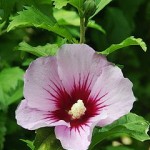Belly Binding After Birth is a practice used around the world in older traditions, with good reason. It offers such stability, and comfort, like being hugged at a time when there is so much flab or stretched tissue and empty spaces inside. The body is able to work so much better, without so much slip and slide on the connections. That will include not only tissue rejuvenation but bowels, digestion, reducing gas and bloating, even hormones and mood will be supported.
One of my students just asked about wrapping protocols for after Cesarian birth, and Dr. Claudia Welch recently asked my advice about how I use the practice of belly binding – what kind of wraps. You might like to see these discussions. It’s on my to-do list to make you a little video but for now, here you are!
Of course the “it depends” factor is there – cost, ease of access and use, appearances, fabric content, to wear over or under, how many to have, and time willing to invest.
I tend to go simple, and purchase/suggest purchasing a 5 yard piece of very lightweight cotton. Depending on width, you get 5 or 6 strips longwise, and can choose to pretty it up with hem or not. About 12″ wide, raw works good. We lay it across the abdomen in front and have mama slowly turn, as it goes around, some up over kidneys, some down over hips sometime, depends how she wants to wear it so she can still use the bathroom, but feel snugged. Cotton crinkle cloth works well, or lightest muslin, but the neutral colors have to be worn underneath for most people.
It helps them to have one or two in the wash, one to wear, one to loose, and – maybe one or two to give to a girlfriend.
Dr. Jyoti Jagtap, young vaidya and mama herself on our student forum, advises a minimum of 1/2 hour wearing a day. We can most easily wrap them before their nap after their home spa treatment/postpartum warm oil massage (and a bathroom run!) It is the best time for them to experience it with help, then not be afraid to try on their own. Some put it on after bathing. Some Ayurvedics advise to wear all day. Dr. Sarita Shrestha’s grandmother wore one all her life, and had best posture and digestion, passing over in mid 90’s. I wore one for some months during premenopause, and took such comfort from it!
I hear of wide ace bandages which can be used more easily, but the degradation of the material from cleansing massage oil out of them does not make for smart investment. Maternity stores sell one I think it is close to $50, maybe a $38 one (velcroed girdle style in synthetic, same laundering issues), and they also sell a $9 or so item which can be used they say in pregnancy and postpartum, but has so much give and so little hold it is a waste of money IMO anytime.
Japanese use the obi sash as a special gift sanctified in temple I think it is 5th month pregnancy, with her mother usually. I’d like to hear more about this!
Malaysia they have a traditional muslin lace-up deal, being sold worldwide now, bundled with an herbal poultice to use underneath. Valerie Lynn at mypostpartumwellness.com has done excellent and sincere job of marketing and product development sharing the traditional Malay ways. Many juicy tidbits may be gained from this and other cultures, though her food combining and meals are not quite up to my experience for many moms. It is fascinating to apply what we know to understand why this practice there, another practice in another culture – some of it is climactic, or what is availbale in the area plays a part. That’s an aside for another discussion! She has kindly quoted about our work in her well organized book in several places.
Because a C-birth mama has an incision with bandage needing changing, we work around that, and need for oxygen to the stitches. I have seen such good results when they use lavender or helichrysum oil from Young Living, organic or better is essential to safe use w/o petrochemical solvents or synthetic molecular issues. Also note, distillation method, temp and pressure varies and can affect effectiveness. That said, since the essential oils help oxygenate, are antiseptic, analgesic and help wound /scar healing, that’s first priority, before thinking about belly wrapping. If they want it also, assist them.
It works well to apply the essential oils as bandage is being changed, to simply drip 1-3 drops on the incision is usually enough. On epidural site and base of brainstem when headaches are coming, also. Those aweful headaches so often when the dural tube has been punctured, with CSF(cerebro-spinal fluid) loss and psychic separation from Baby during birth even, seems a huge issue these days with >33% of mamas having C-births. And 2-3 drops real lavendula angustafolia combined with the mother’s abhyanga (gentle clockwise in this case, circular warm oil massage) on tummy usually takes care of cramping and enhances shrinking of the uterus – both much more quickly than the norm.
After surgery, I do not have official protocol word about when to start belly wrapping, from a vaidya yet. Common sense says to go with what the client feels and is able to do for the first few days, and have her ask her doctor. Generally I see they are ready about 7 -10 days postpartum. If they want to before, and doc has no problem with it – gently, and more firmly as feels comforting.




